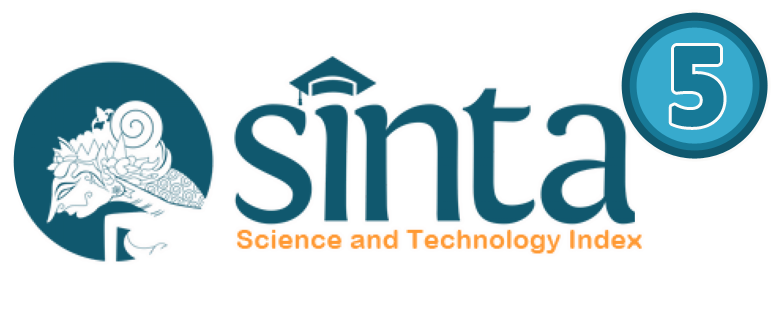KLASIFIKASI PENENTUAN KELAYAKAN PINJAMAN KOPERASI DENGAN ALGORITMA CART MENGGUNAKAN ALGORITMA ADABOOST
DOI:
https://doi.org/10.31949/infotech.v8i2.3247Abstract
According to the Cooperative Bureau, cooperatives became a mainstay for the lower middle class to revive and stabilize their respective economies when the Covid-19 Pandemic broke out in Indonesia. Through savings and loan cooperatives, people can provide loans to cooperatives. In this case, cooperatives provide money lending services to their members, and certain conditions apply to determine which loans are eligible. In connection with this, the officer will analyze the loan by filling out a loan application form accompanied by certain requirements in each loan application. In a mechanism that is not simple, problems often arise when eligibility decisions are not appropriate, namely bad credit. This research aims to solve the problem by designing a data mining application with a function to determine the feasibility of giving loans to customers. The method used is the CART algorithm method and uses the Adaboost algorithm. The results of the application of the CART algorithm method optimized with Adaboost turned out to be able to classify the eligibility of cooperative lending well, simplify the mechanism in credit analysis activities and be able to provide accurate eligibility status, which is guaranteed by the accuracy results of CART and Adaboost.
Keywords:
Cooperative, The feasibility of providing loans, CART, AdaboostDownloads
References
Dinas Koperasi dan Usaha Mikro, K. d. (2022). Dinas Koperasi, Usaha Kecil & Menengah Provinsi Jawa Tengah. Retrieved from https://dinkop-umkm.jatengprov.go.id
institute, s. r. (2020). Studi Dampak Sosial-Ekonomi Pandemi COVID-19 di Indonesia | The SMERU Research Institute. Retrieved from https://smeru.or.id/id/research-id/studi-dampak-sosial-ekonomi-pandemi-covid-19-di-indonesia
Kesehatan, K. (2021). Infeksi Emerging Kementerian Kesehatan RI. Retrieved from https://infeksiemerging.kemkes.go.id/dashboard/covid-19
Marita, Riadiana Eka. (2016). Analisis data mining untuk mengklasifikasi kelayakan pemberian pinjaman pada KSP Restu Indo Agung menggunakan Algoritma C4.5. 1-11.
Mulyani, E. D. (2020). Klasifikasi Penentuan Kelayakan Pemberian Kredit Menggunakan Metode Naive Bayes Classifier Classification of Determination of Credit Worthiness Using the Naive Bayes Classifier Method. 81-92.
Pradana, E. (2018). ANALISIS PENERAPAN ADAPTIVE BOOSTING (ADABOOST) DALAM MENINGKATKAN PERFORMASI ALGORITMA C4.5. 24.
Quinlan, J. R. (1986). Induction of decision trees. Machine Learning, 81-106.
Ratnaningrum, D. (2016). Analisis Klasifikasi Nasabah Kredit Menggunakan Bootstrap Aggregating Classification and Regression Trees (Bagging Cart). 81-90.
Riyanto, E. A. (2021). Analisis Kinerja Algoritma CART dan Naive Bayes Berbasis Particle Swarm Optimization (PSO) untuk Klasifikasi Kelayakan Kredit Koperasi. 55.
Santos-Pereira, J. (2021). Top data mining tools for the healthcare industry. Journal of King Saud University - Computer and Information Sciences.
Syafriansyah, M. (2015). Analisis Sistem dan Prosedur Pemberian Kredit pada Koperasi Simpan Pinjam Sentosa di Samarinda. 83-93.
Urso, A. (2018). Data mining: Classification and prediction. Encyclopedia of Bioinformatics and Computational Biology: ABC of Bioinformatics, 384-402.
Webagus. (2020). Data mining: Data mining concepts and techniques. Retrieved from https://www.webagus.id/2020/02/knowledge-discovery-in-database-kdd.html
Algoritma AdaBoost (Adaptive Boosting) - Pip Tools. (n.d.). Retrieved December 30, 2021, from https://piptools.net/algoritma-adaboost-adaptive-boosting/
Amin, M. F. (2016). Penerapan Algoritma Cart Untuk Memprediksi Status Kelulusan Mahasiswa. Jutisi: Jurnal Ilmiah Teknik Informatika Dan Sistem Informasi, 5(3), 1215–1222.
Aribowo, A., Kuswandhie, R., & Primadasa, Y. (2021). Penerapan dan Implementasi Algoritma CART Dalam Penentuan Kelayakan Penerima Bantuan PKH Di Desa Ngadirejo. CogITo Smart Journal, 7(1), 40. https://doi.org/10.31154/cogito.v7i1.293.40-51
CAO, Y., MIAO, Q.-G., LIU, J.-C., & GAO, L. (2013). Advance and Prospects of AdaBoost Algorithm. Acta Automatica Sinica, 39(6), 745–758. https://doi.org/10.1016/s1874-1029(13)60052-x
Harismi, A. (2020). Klasifikasi Umur Menurut WHO dan Masalah Kesehatannya. SehatQ. https://www.sehatq.com/artikel/risiko-penyakit-berdasarkan-klasifikasi-umur-menurut-who
Hendrickx, T., Cule, B., Meysman, P., Naulaerts, S., Laukens, K., & Goethals, B. (2015). Mining association rules in graphs based on frequent cohesive itemsets. Lecture Notes in Computer Science (Including Subseries Lecture Notes in Artificial Intelligence and Lecture Notes in Bioinformatics), 9078(3), 637–648. https://doi.org/10.1007/978-3-319-18032-8_50
Maresa, K. I., Restu, I. W., & Ekawaty, R. (2019). Inventarisasi Jenis Ikan yang Didaratkan dan Kondisi Sosial Ekonomi Nelayan di PPI Sangsit, Buleleng, Bali. Current Trends in Aquatic Science II, 2(1), 29–36.
Pt, S. K., Cabang, F., & Desember, M. (2011). Model credit scoring untuk proses analisa kelayakan fasilitas kredit motor menggunakan metode classification and regression tree (cart).
Qilla Aulia Suri, A. M. G. (2019). Peningkatan Akurasi Pada Algoritma C4.5 Menggunakan Adaboost Untuk Meminimalkan Resiko Kredit. Prosiding SNATIF Ke-6 Tahun 2019, 2007, 96–101.
Rakasiwi, L. S. (2021). Pengaruh Faktor Demografi dan Sosial Ekonomi terhadap Status Kesehatan Individu di Indonesia. Kajian Ekonomi Dan Keuangan, 5(2), 146–157. https://doi.org/10.31685/kek.v5i2.1008
Widayati, R., & Herman, U. (2019). Penyelesaian Kredit Bermasalah Pada Pt. Bank Perkreditan Rakyat (Bpr) Nagari Kasang. 1–14. https://doi.org/10.31219/osf.io/d738z
Published
How to Cite
Issue
Section
License
Copyright (c) 2022 INFOTECH journal

This work is licensed under a Creative Commons Attribution-NonCommercial-ShareAlike 4.0 International License.









